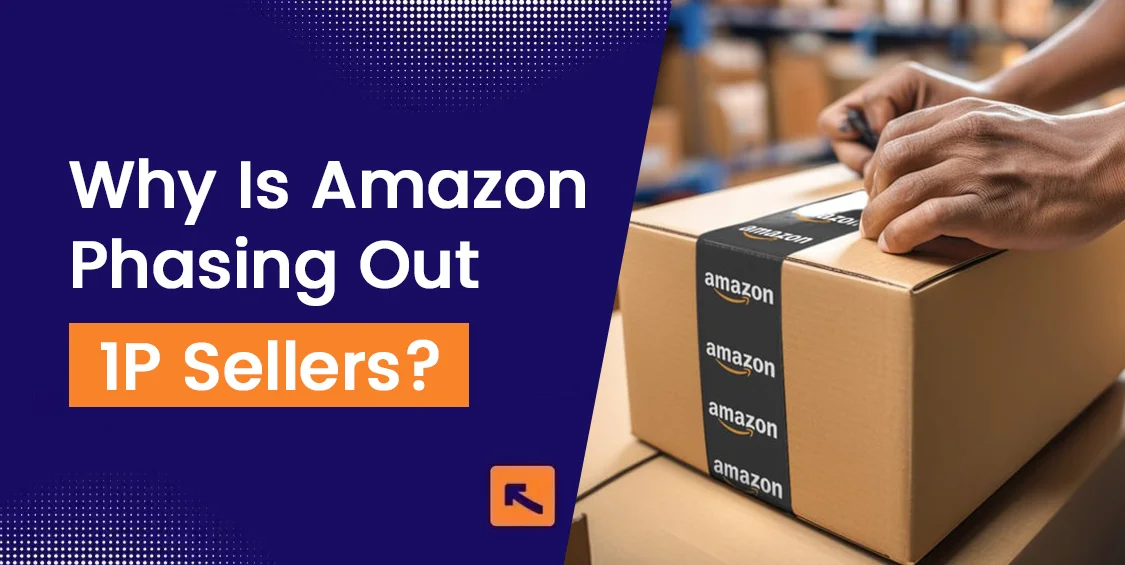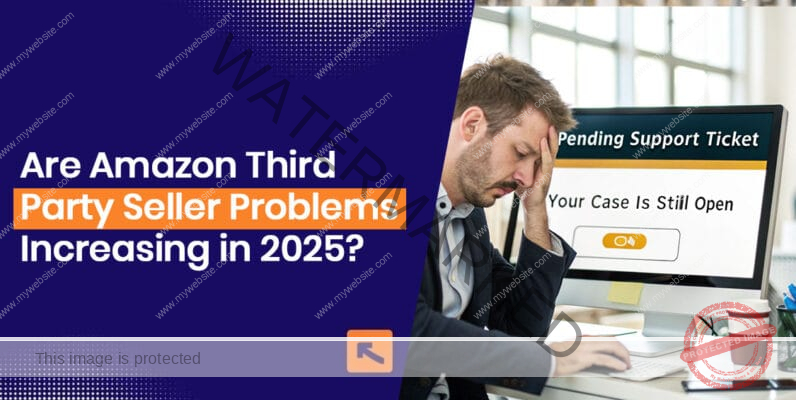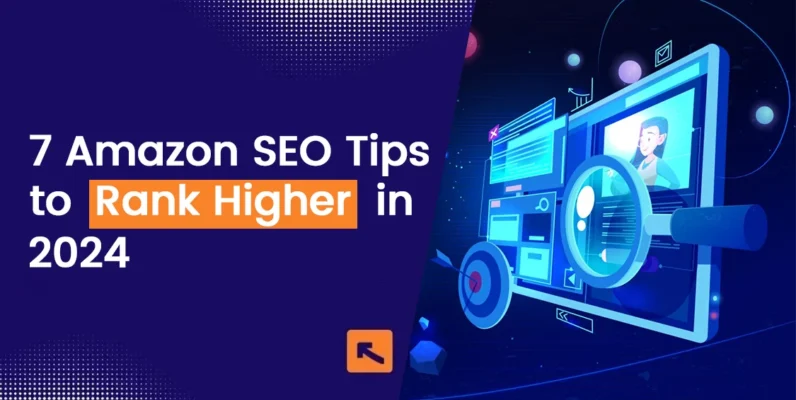In recent years, Amazon has been making noticeable changes to its platform, particularly in how it deals with its 1P sellers. Many brands who once relied heavily on Amazon’s Vendor Central platform are finding themselves in a tough spot, receiving unexpected notifications that their vendor agreements are being terminated.
Why is Amazon phasing out 1P sellers, and what does this shift mean for brands? If you’re a brand relying on Vendor Central, this blog will provide a clearer understanding of the reasons behind this change and how you can prepare for a more sustainable future with Amazon.
What is a 1P Seller?
Before diving into why Amazon is phasing out 1P sellers, let’s first clarify what it means to be a 1P seller. A 1P seller, also known as a first-party seller, operates on Amazon Vendor Central. As a 1P seller, brands essentially act as wholesale suppliers to Amazon. Amazon buys their products in bulk and then sells them directly to customers.
While this model offers ease of logistics (since Amazon handles everything from pricing to fulfillment), it comes with drawbacks. Brands have limited control over their pricing, inventory management, and customer data. And as we’re now seeing, many 1P sellers are finding themselves phased out as Amazon shifts its focus.

Why is Amazon Phasing Out 1P Sellers?
1. Amazon’s Focus on Profitability
One of the key reasons Amazon is phasing out its 1P sellers is due to its focus on maximizing profitability. Operating with 1P sellers comes with significant costs for Amazon. The company has to purchase inventory, manage logistics, and handle pricing and returns, which can be resource-heavy, especially for lower-margin or slower-moving products.
By transitioning sellers to Seller Central (3P), Amazon shifts these responsibilities to the brands themselves. This makes Amazon more cost-efficient while allowing brands to manage their operations independently, leading to potentially higher profitability for both parties
Fun Fact: Amazon reportedly processed billions in unsold inventory from 1P sellers in 2022, leading them to reevaluate their vendor strategy.
2. Streamlining Inventory and Fulfillment
Amazon’s logistics network is a crucial element of its success, and efficiency is key to keeping customers satisfied. When Amazon buys from 1P sellers, they take on the burden of managing and distributing that inventory, which can sometimes lead to overstock or understock issues. This ultimately affects the customer experience.
Shifting sellers to a 3P model means Amazon doesn’t have to manage the full burden of fulfillment. Brands using Fulfillment by Amazon (FBA) handle much of the logistics, allowing Amazon to focus on what it does best—delivering products efficiently and expanding its platform.
3. Focus on Third-Party Sellers
Over the past few years, Amazon has shown a growing preference for third-party (3P) sellers. In fact, over 60% of sales on Amazon now come from 3P sellers (Jungle Scout). The 3P model allows brands to sell directly to customers through Amazon’s marketplace, which provides greater flexibility and control over their business operations.
- Pricing control: Unlike the 1P model, where Amazon sets the price of products, 3P sellers have full control over pricing, allowing them to protect their margins.
- Inventory management: 3P sellers are responsible for managing their inventory, reducing the risk of unsold stock and wasted resources.
- Branding opportunities: The 3P model gives sellers access to tools like Amazon Brand Registry and A+ Content, which enable them to enhance their product listings and build their brand presence.
Branding opportunities: The 3P model gives sellers access to tools like Amazon Brand Registry and A+ Content, which enable them to enhance their product listings and build their brand presence.
4. The Rise of Automation and Vendor Termination
As Amazon has grown, the company has leaned heavily into automation, with algorithms now playing a major role in determining which vendors stay and which ones go. Many brands have reported sudden vendor termination notifications, often without explanation. This is largely due to Amazon’s algorithmic assessments of sales velocity, profit margins, and product relevance.

How to Prepare for the 1P to 3P Transition
Now that you understand why Amazon is phasing out 1P sellers, the next logical step is preparing your business for the transition to the 3P model. Here are some essential steps to ensure a smooth shift:
1. Register for Amazon Brand Registry
The first step in transitioning from 1P to 3P is registering your brand with Amazon Brand Registry. This gives you access to essential tools that will help you protect your intellectual property and enhance your brand presence on Amazon.

2. Leverage Fulfillment by Amazon (FBA)
If you’ve been relying on Amazon to handle your fulfillment as a 1P seller, switching to Fulfillment by Amazon (FBA) will allow you to maintain many of the benefits you’re used to. With FBA, Amazon continues to handle the logistics, ensuring that your products remain Prime eligible and that customers enjoy fast shipping.

3. Take Control of Your Pricing Strategy
As a 3P seller, you have full control over your pricing. Unlike the 1P model, where Amazon dictates your prices, transitioning to Seller Central allows you to adjust prices based on demand, market trends, and profitability goals.

4. Build a Direct Relationship with Customers
In the 1P model, Amazon owns the customer relationship. However, when you shift to 3P, you can engage with your customers more directly. This opens up opportunities to build brand loyalty and offer a better customer experience.
Pro Tip: Utilize customer data from Seller Central to better understand buying habits and improve your customer service. This can lead to higher ratings and repeat purchases.
Conclusion: What Does the Future Hold for 1P Sellers?
Amazon’s decision to phase out 1P sellers is driven by a mix of profitability goals, inventory management concerns, and a growing preference for the 3P model. While the transition may seem challenging, it’s also an opportunity for brands to take full control over their operations and grow in a more sustainable way.
AMZDudes specializes in helping sellers navigate the complex world of Amazon. If you’re facing vendor termination or considering making the move from 1P to 3P, reach out to us. Connect with our We can help you manage the transition smoothly, ensuring that your brand thrives in Amazon’s new ecosystem.




